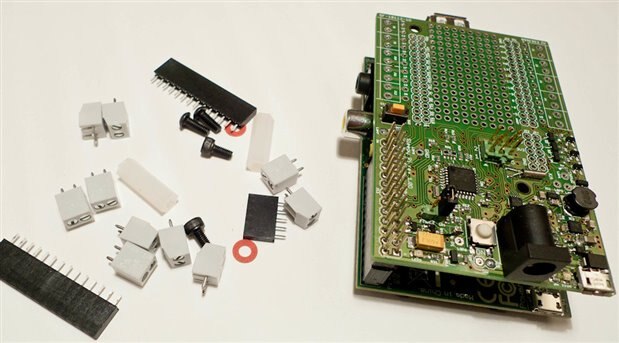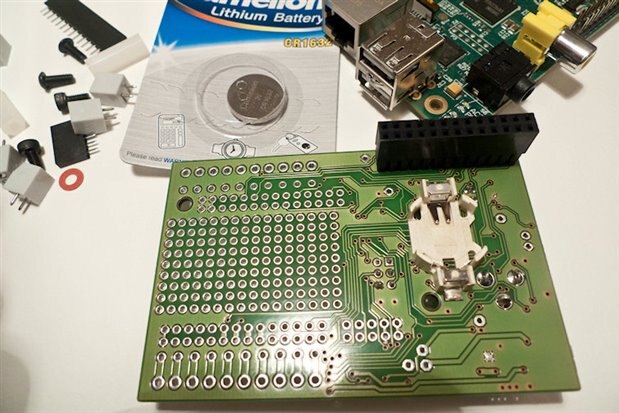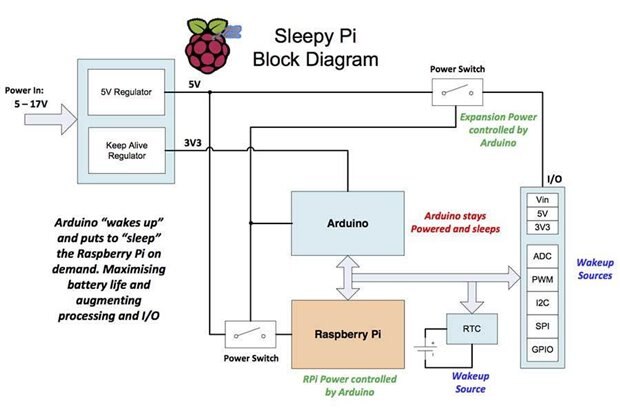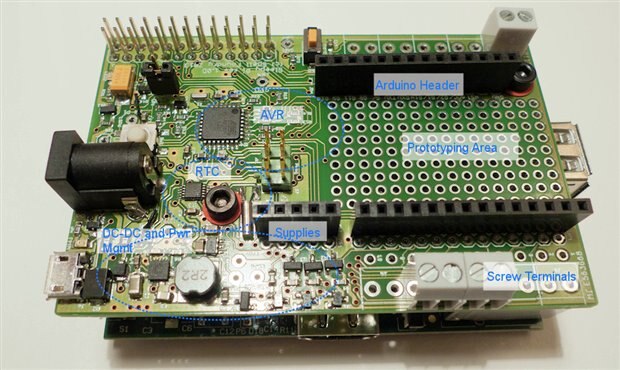Introduction
The Sleepy Pi is a board produced not a million miles from my home town, and it is designed to extend the Raspberry Pi (RPI) capabilities. After having examined it, the conclusion is that the board is fantastic with a rich set of functionality and extremely well-designed, and it will provide tremendous value for projects with the types of requirements listed below.
This board should interest people with any of these requirements:
1. The ability to run the RPI from a battery
2. The ability to run the RPI intermittently (based on events or time), perhaps over days/months from a remote location
3. Interface to hardware and run microcontroller code
4. Use existing Arduino compatible boards
5. The ability to keep time without a time server on the Internet
It opens up some unique opportunities. For example you could shut down the RPI, collect data using the far lower power in-built microcontroller on the Sleepy Pi, and then periodically wake up the RPI and send the data to a server. The RPI could run for days/weeks/months like this at a remote location.
Main Features
The main features are:
1. Provide battery backed up clock (it has a socket for a watch type cell)
2. Provide efficient, regulated power to the RPI (there is a built-in DC-DC converter and a DC barrel socket) – or use your existing power supply (there is a USB socket for that)
3. Allow the RPI to be put to a ‘deep sleep’ (power off) and awakened at certain defined times or when a particular event (analog or digital input) occurs
4. Allows external hardware to receive a switched power supply, so that it can be put to sleep too
You can see the RTC back-up battery socket on the underside (battery not supplied due to postal restrictions - a CR1632 cell is needed for enabling that capability):
The diagram here is from the Sleepy Pi website:
This photo shows the mapping of where bits of functionality are located on the board:
Owing to its design, it has some very attractive additional advantages:
1. Arduino compatible boards can be plugged in on top, for extending usefulness
2. There is an on-board Atmel AVR microcontroller – on of the world’s most popular microcontrollers – which allows for some relatively high speed interfacing to hardware without the varying latency that Linux would incur
3. Decent area for prototyping – saves an additional board
4. Built-in ADC (in the AVR chip) for connecting to analog sensors (two 10-bit analog channels)
5. Additional 'peripherals' available inside the AVR chip, such as PWM for controlling analog devices or for light dimming/motor control (requires additional circuitry)
Design Overview
There are many bad and good boards out there, this one falls in the extremely good category.
Hardware Design
The design is really nice – the list of good points seems endless: sensibly, it is a rectangular board without strange cut-outs (which save little space and wouldn’t allow the PCB to fit many cases anyway) so it allows for a usable prototyping area which is really nice. There is space for screw terminals and Arduino headers. All connections are well labelled.
Many connectors are supplied, so you can use the board as you wish. The existing RPI 26-pin connector is not totally consumed and lost; there is an inline header so that additional boards could in theory become part of the sandwich.
The board is securely fastened to the RPI using hex spacers (you will need a 2.5mm hex driver for the supplied bolts). As a design suggestion, perhaps some more holes on the Sleepy Pi would be good, so that it can be bolted into a case. Extra holes may be hard to implement because the board is so packed. A good workaround is to use hex spacers with male thread on one end, so it is a very minor point.
It is nice that decent hex bolts are supplied (this controls the amount of space the head consumes around the board) and insulating washers for the paranoid (like me). I’m really struggling to find a bad point about the Sleepy Pi.
I’d suggest one additional hole, so that it can finally fix the RPI weakness of two holes, since a total of three holes will allow it to firmly be fixed to a surface.
As another suggestion, perhaps a couple of very small holes near the battery, so that it can be tied down if desired and not vibrate/drop out (people may use the Sleepy Pi in some extreme conditions), especially since it is on the underside of the board.
As far as I can tell, the board does not foul up any existing connector on the RPI, including the camera connector.
AVR Microcontroller (Arduino)
In normal (expected) use, no additional hardware is needed and you will be able to run Arduino code directly on the Sleepy Pi.
If required, there is a 6-pin Atmel AVR header for an external programmer. This will allow you to run code written without Arduino support too.
Note that as far as I can tell, the board could in theory even be used independently of the RPI. So, if you happen to need an AVR microcontroller and RTC and DC-DC supply to power your electronic circuit, then this board could be useful for that purpose too.
If you don’t wish to go Arduino-mode and wish to program the AVR yourself, then a programmer is available for under £20($30) (Olimex AVR-ISP-MK2) from Farnell/Newark and it will plug in directly to the Sleepy Pi. I’ve not used it, but it is worth a try – since the Atmel version AVR-ISP 2 is a little tricky sometimes to set up with Windows 7.
The AVR is a great introduction to microcontrollers and has so many uses and existing code snippets available all over the Internet.
Circuit Design
Looking at the schematic, it all looks very nice – decent protection on the power inputs, very good power control using MOSFETs (with protection too), unlike some RPI power control designs which use relays, and the design looks an extremely good quality (a few tantalum, and mainly ceramic caps everywhere as expected for this type of design) and decent modern component selection everywhere.
This is the type of design someone would do for themselves and be proud of the result, rather than a design intended for sale at a reduced price point with a compromised quality.
In the spirit of open source, the schematic is available and any code is on Github. This is a really important because many RPI boards are intended for educational use yet the creators hide the design (maybe they should be named and shamed!) because so much can be learned from looking at the design detail.
Prototyping Area
The prototyping area is of the round isolated rings variety, which is amongst the most useful – it can be used for through-hole parts but also for soldering up surface-mount devices sometimes and joined with thin bare wire.
Summary
It is no surprise if you’ve read the above - this is an impressive board. It is well designed and packed with features. The cost may seem high (£36.99 including VAT) but it does what you would previously have needed several boards to do, and good parts cost money - the design is of a very high quality.





Top Comments
-

Former Member
-
Cancel
-
Vote Up
0
Vote Down
-
-
Sign in to reply
-
More
-
Cancel
-

mcb1
in reply to Former Member
-
Cancel
-
Vote Up
0
Vote Down
-
-
Sign in to reply
-
More
-
Cancel
Comment-

mcb1
in reply to Former Member
-
Cancel
-
Vote Up
0
Vote Down
-
-
Sign in to reply
-
More
-
Cancel
Children